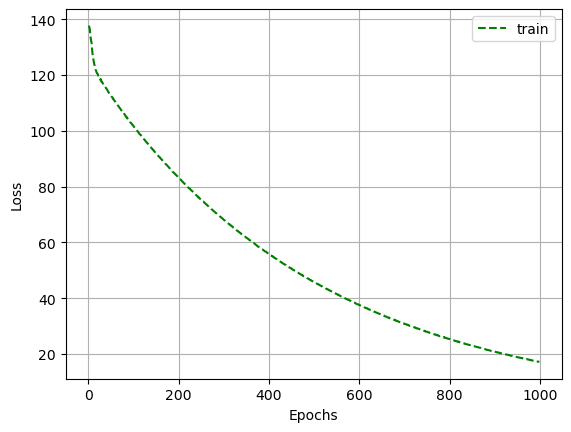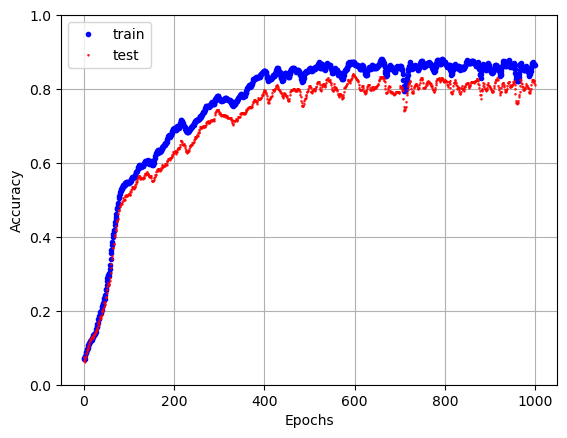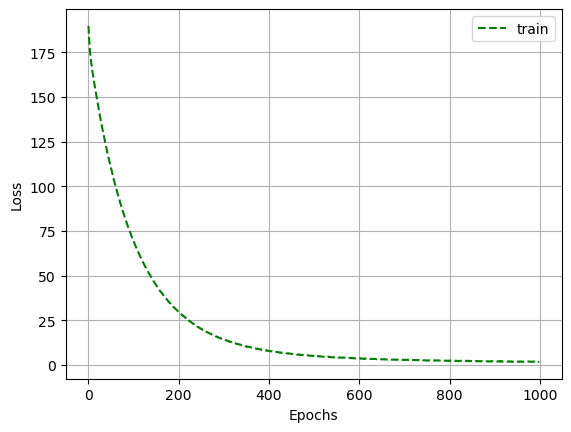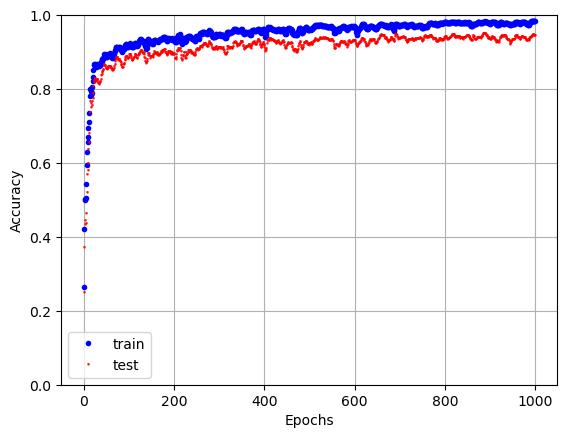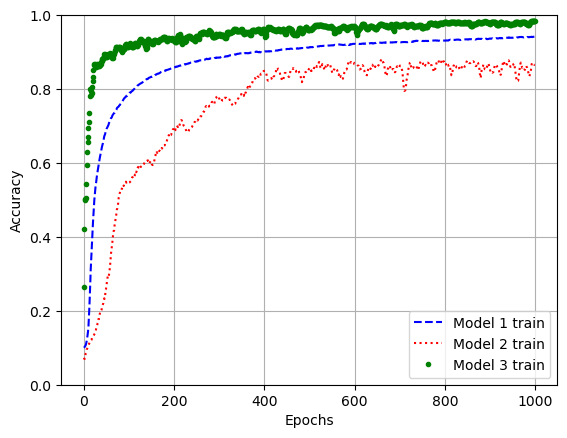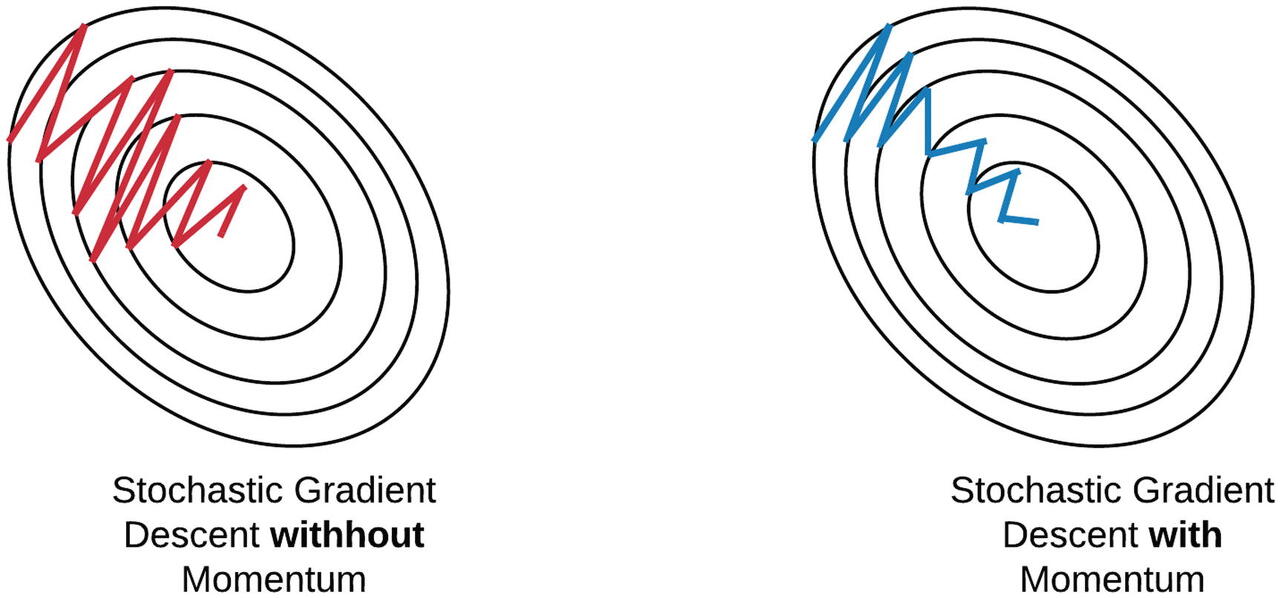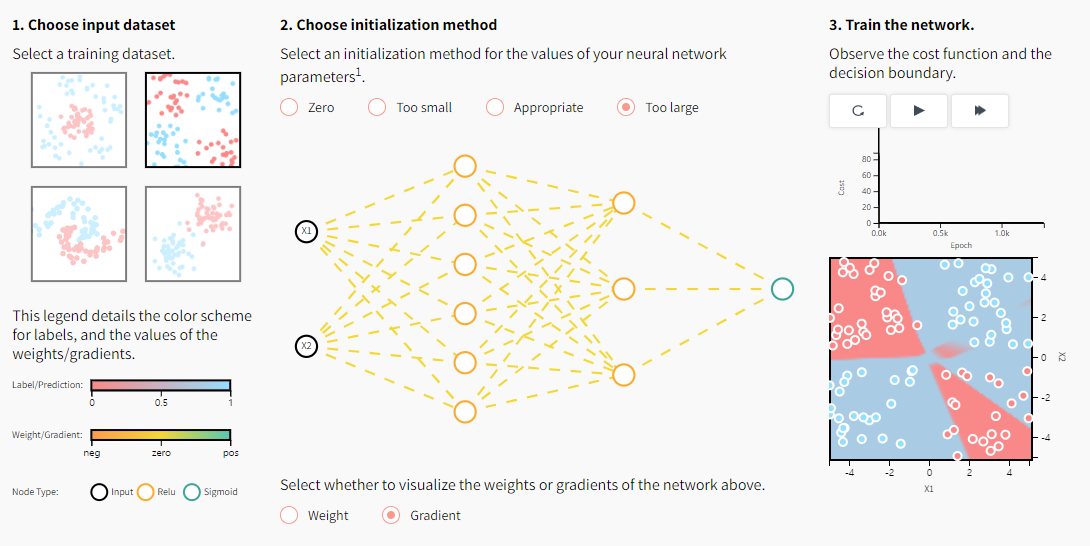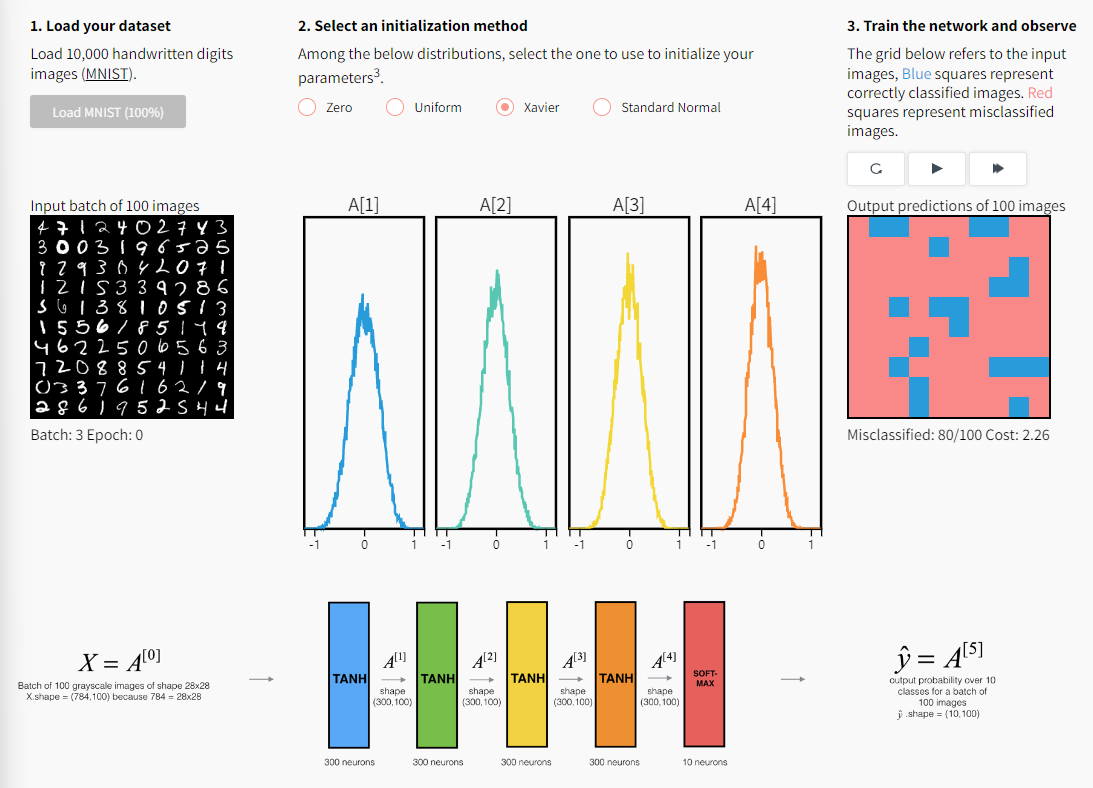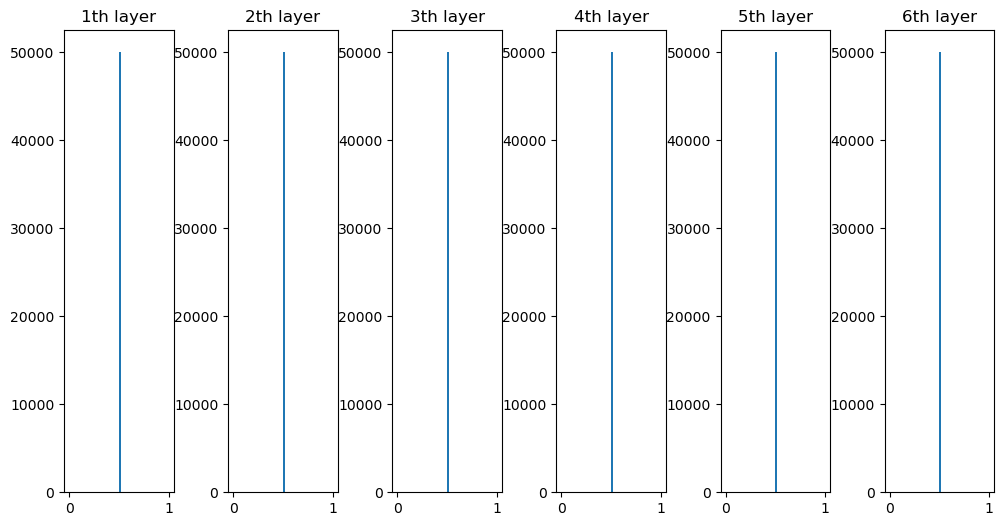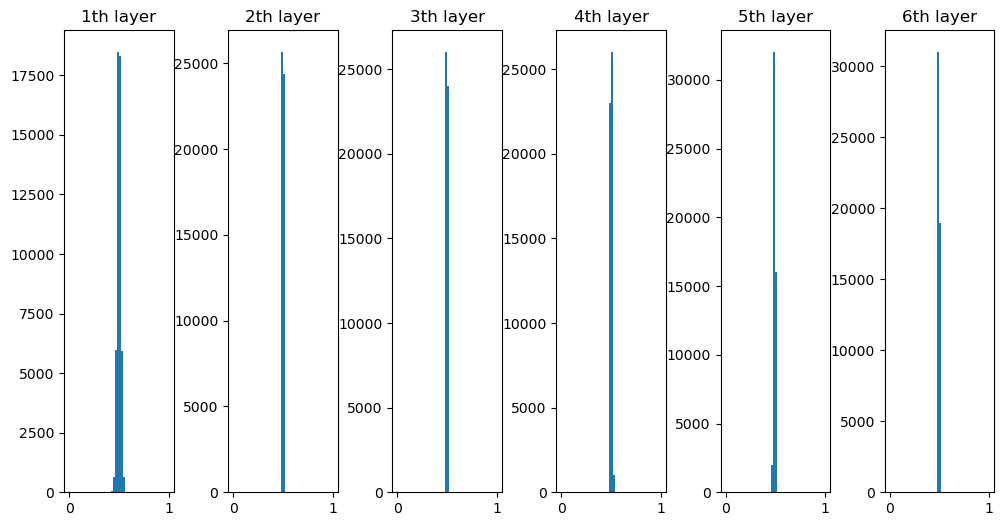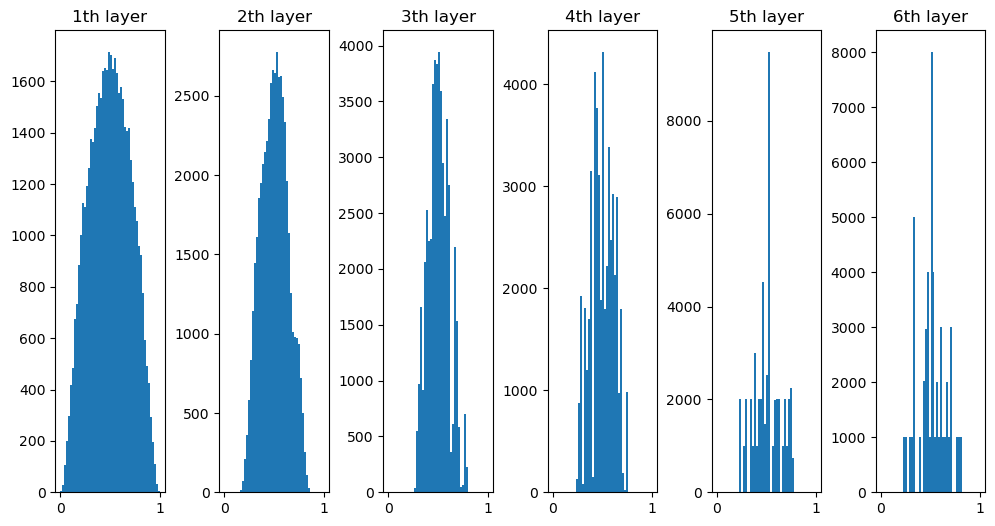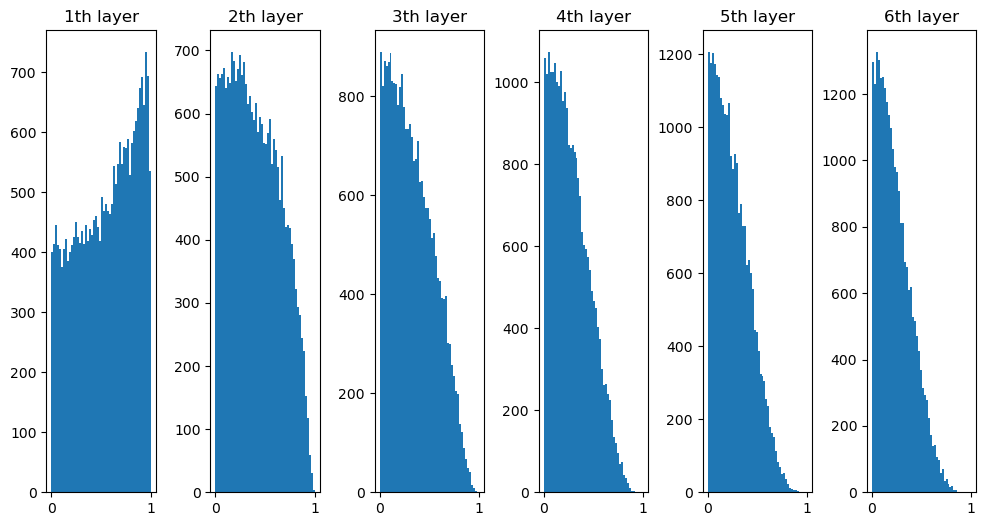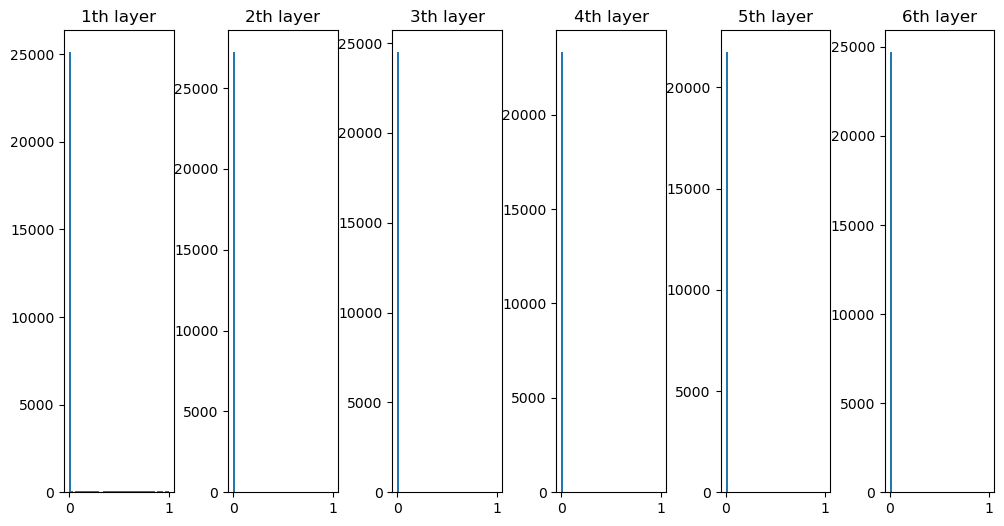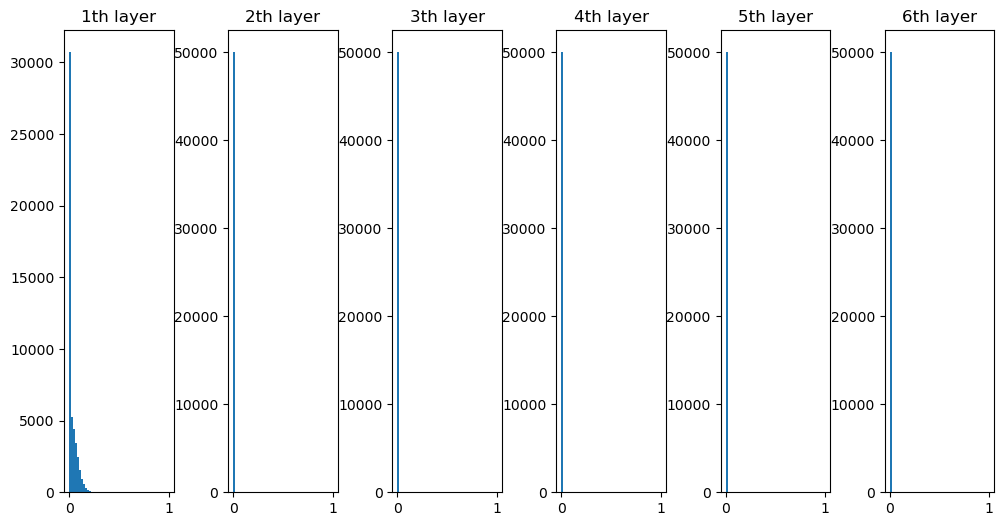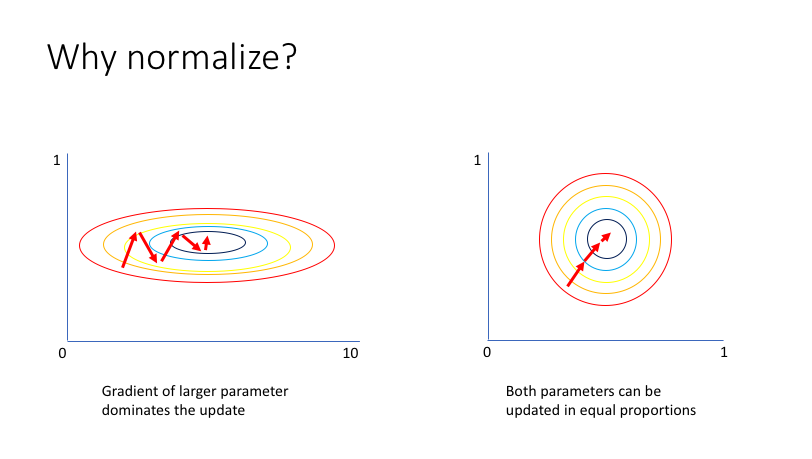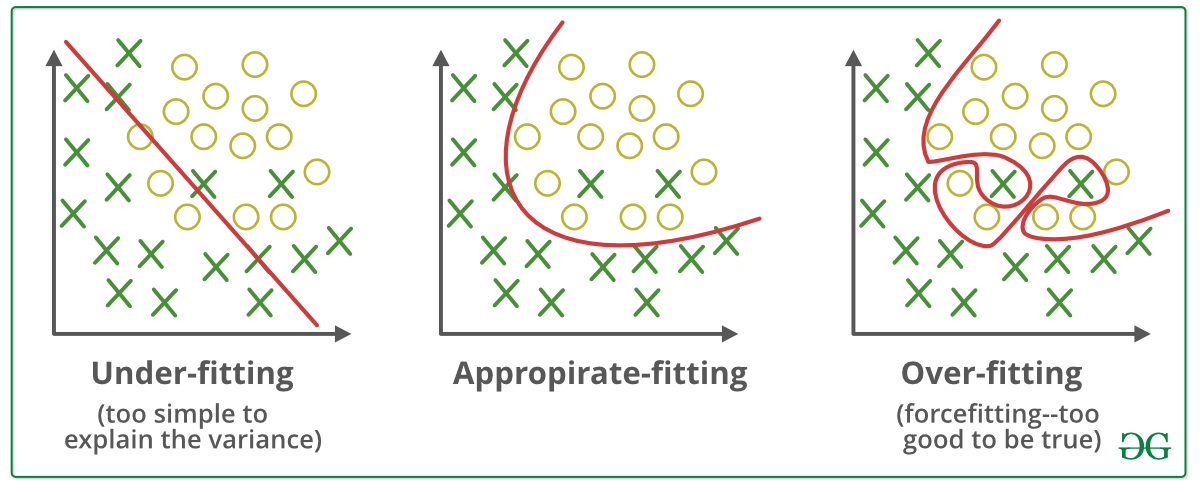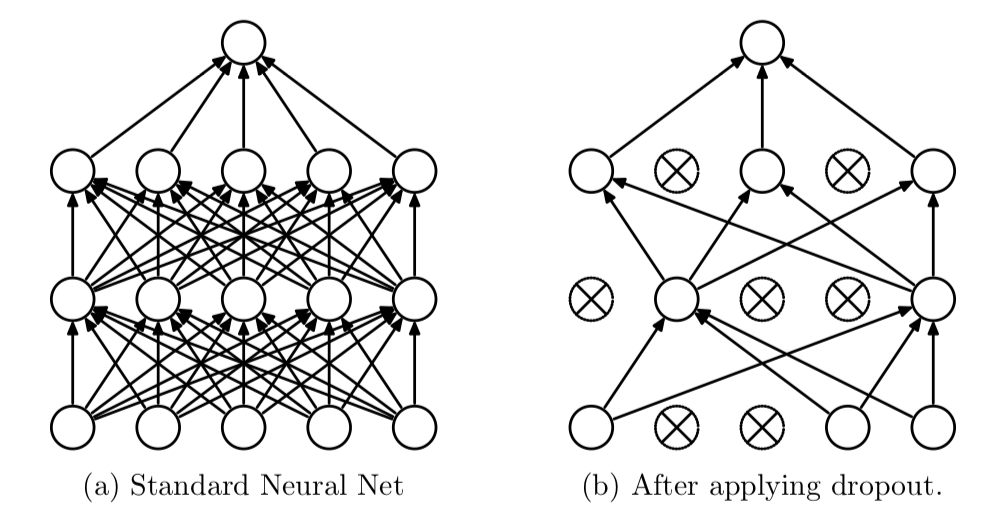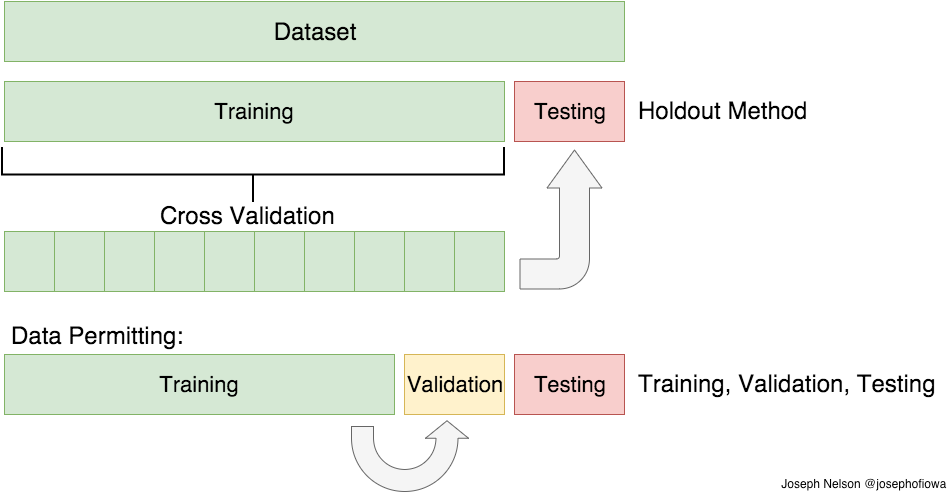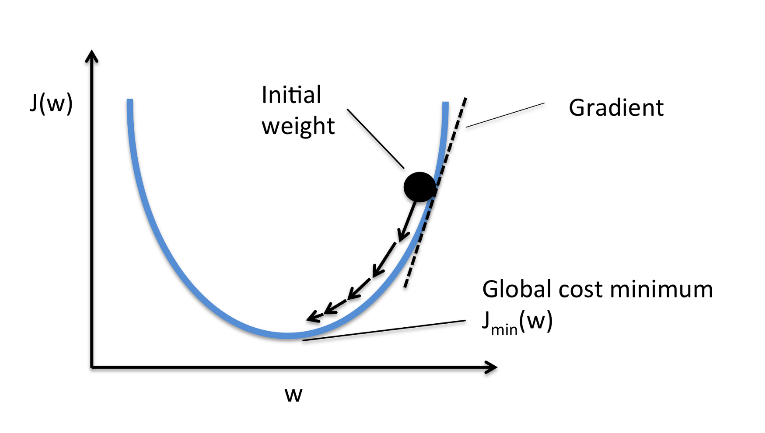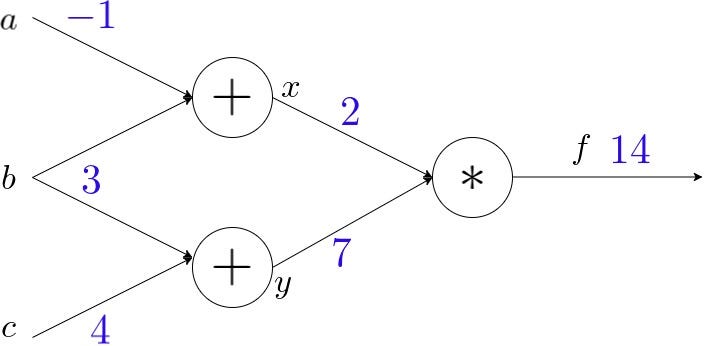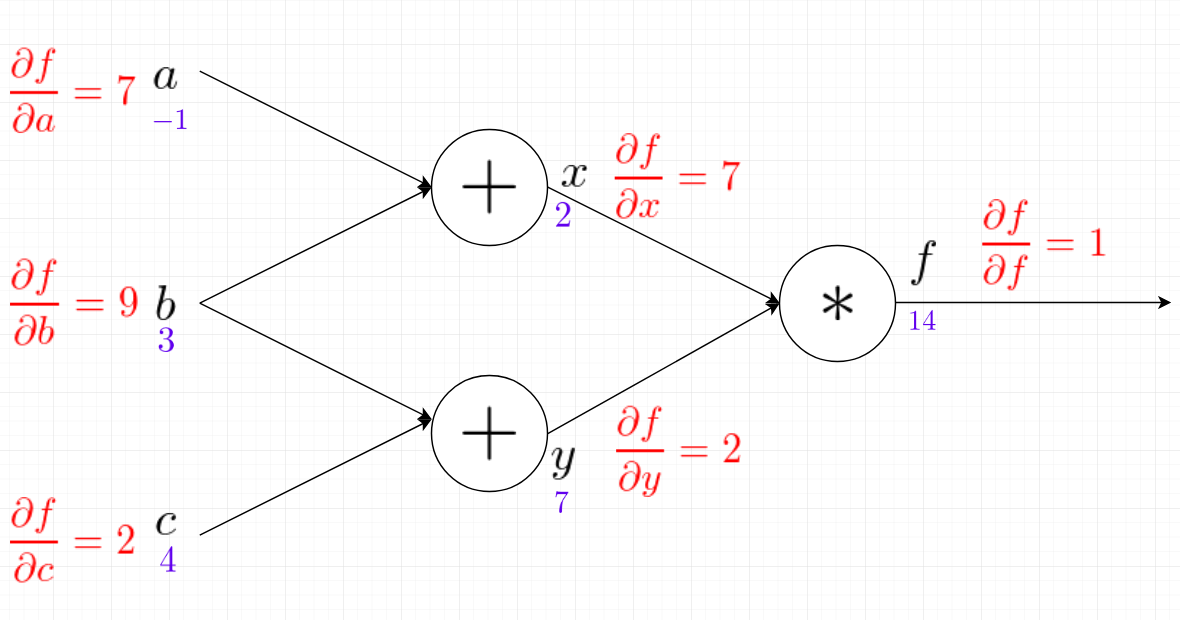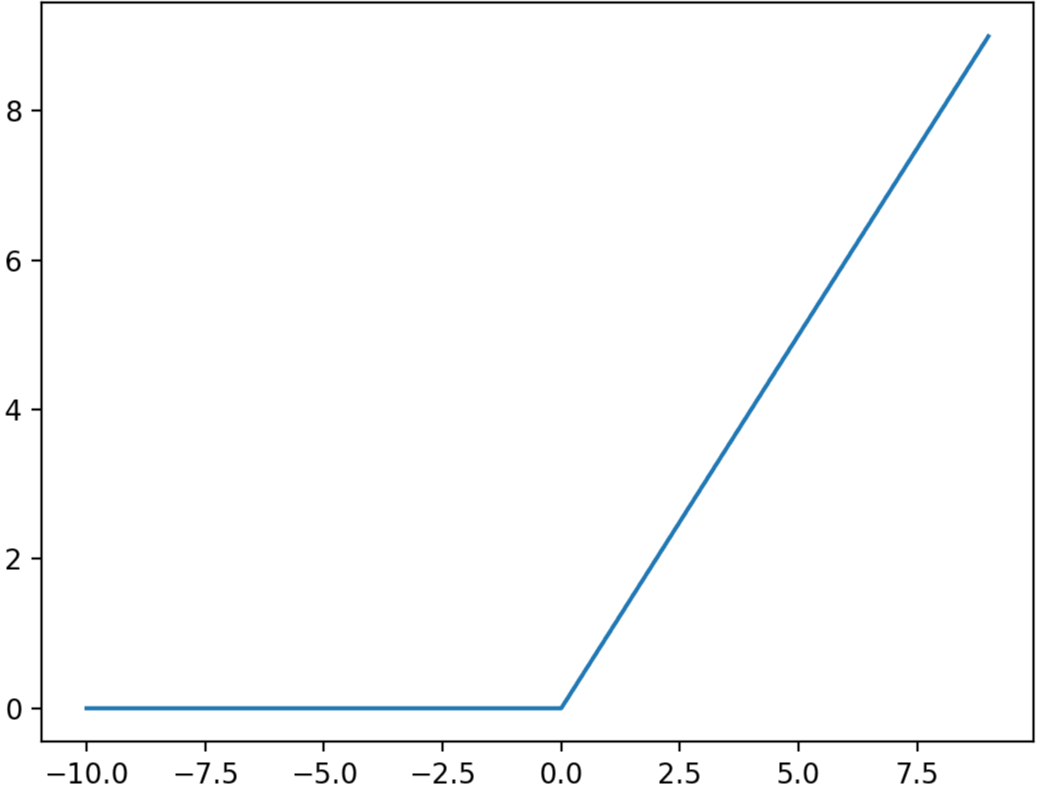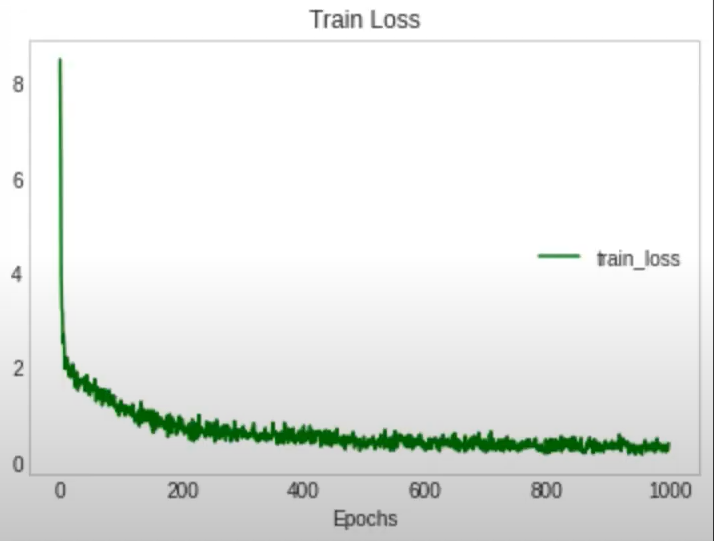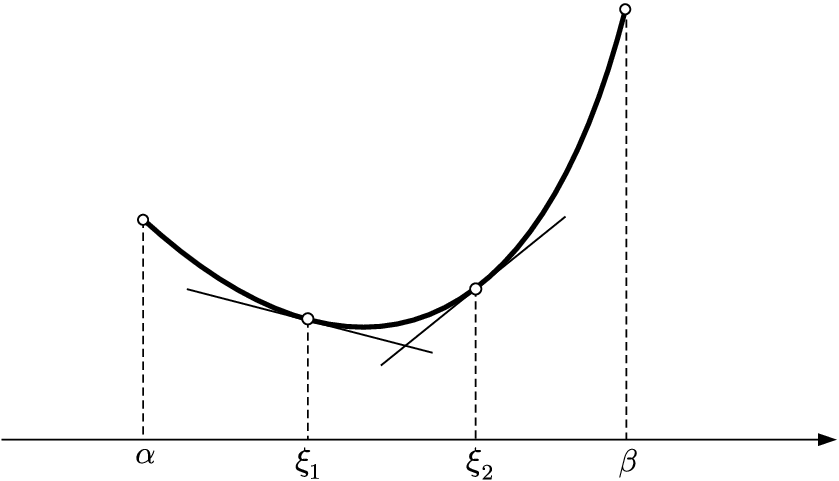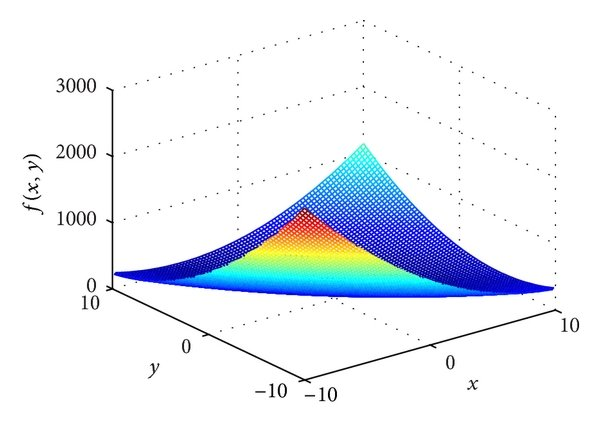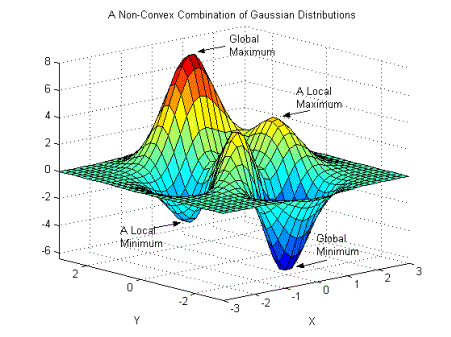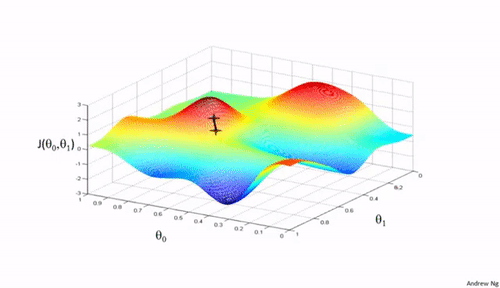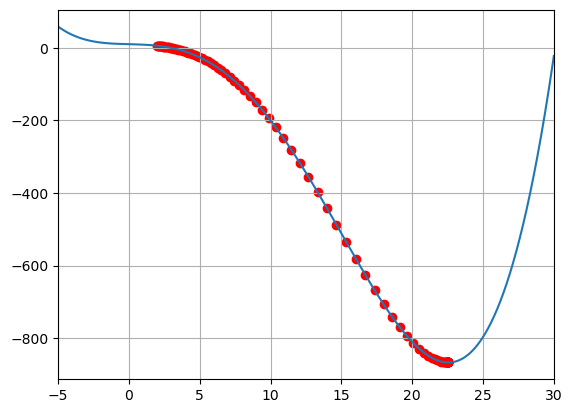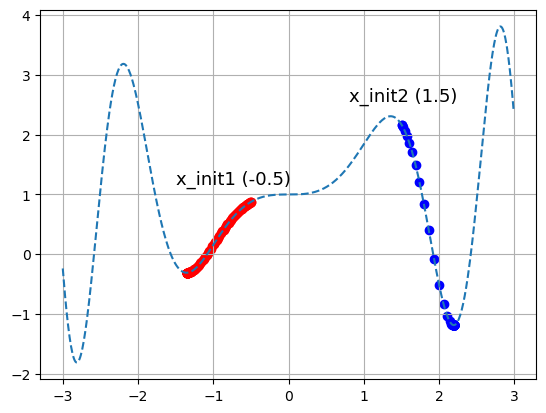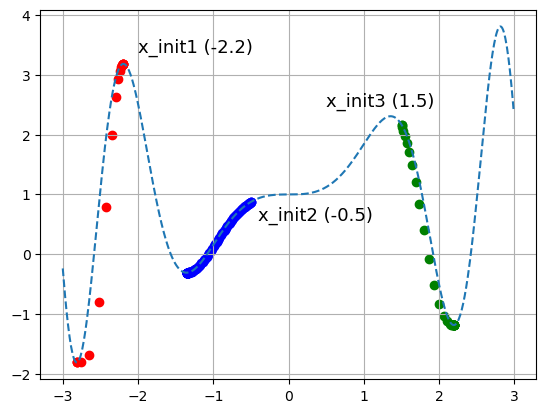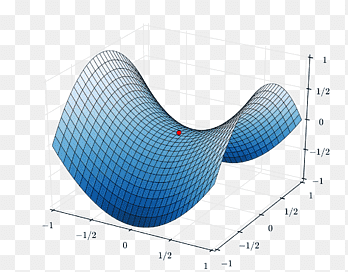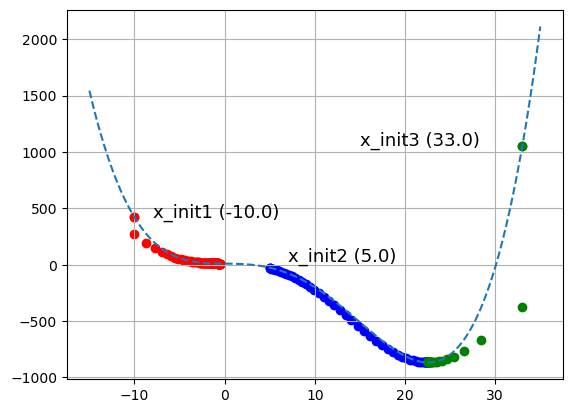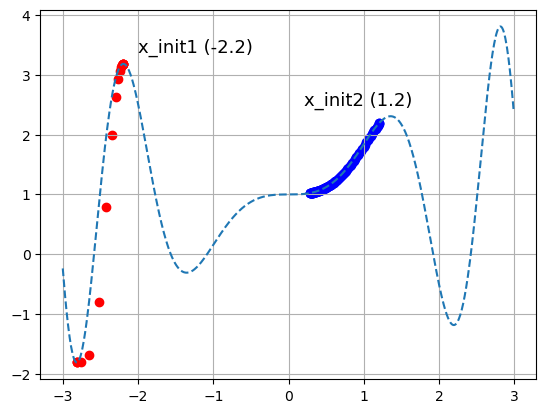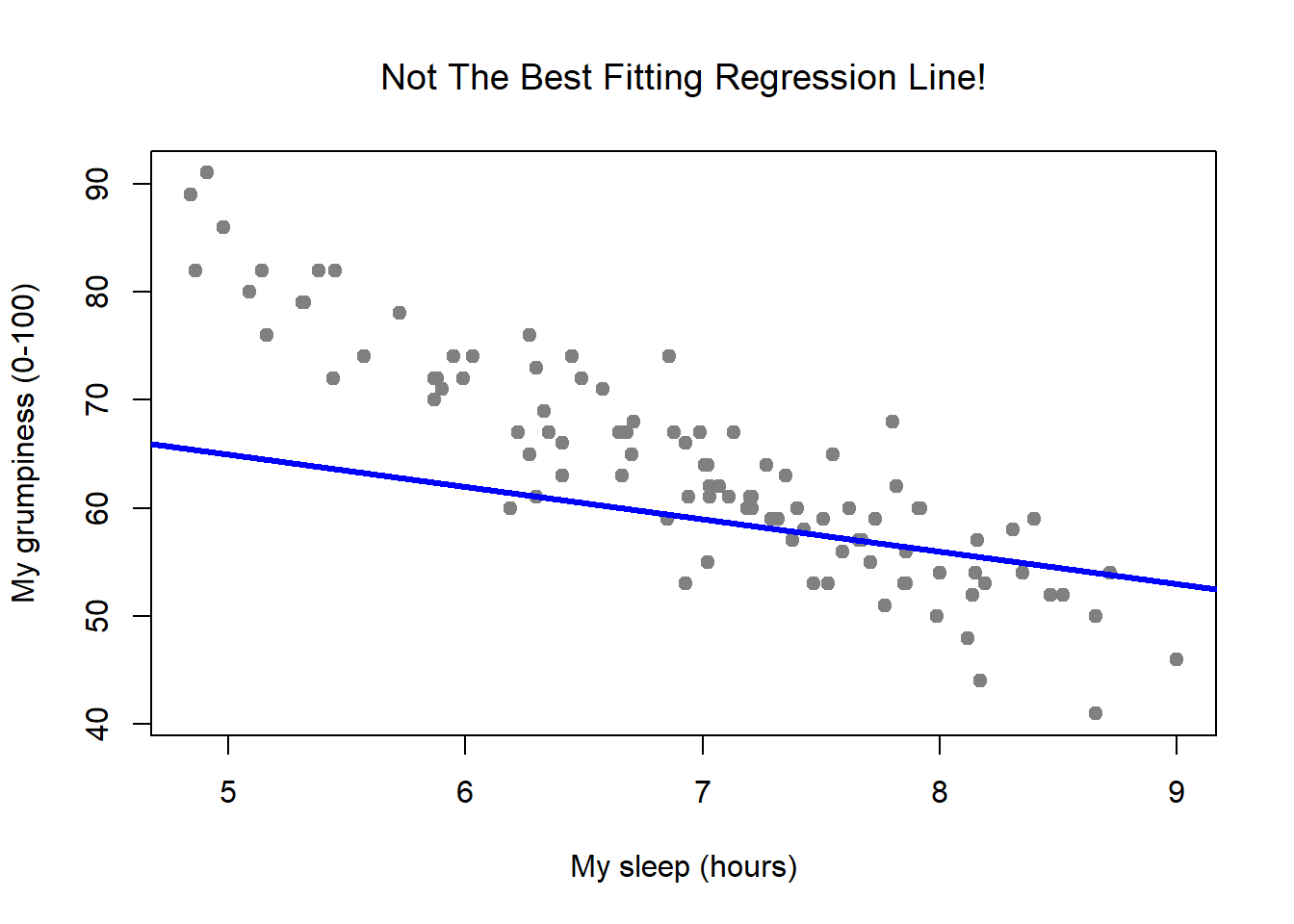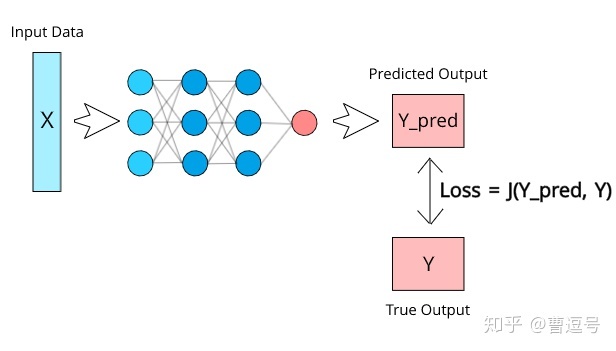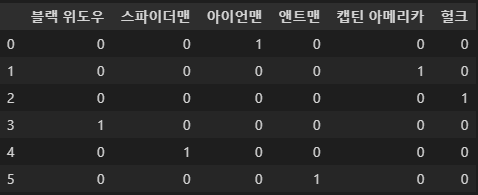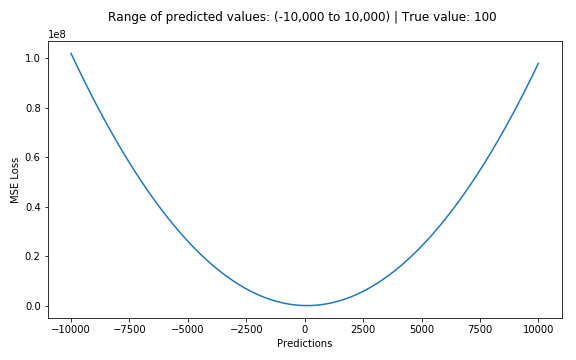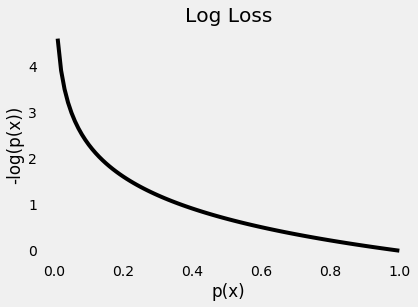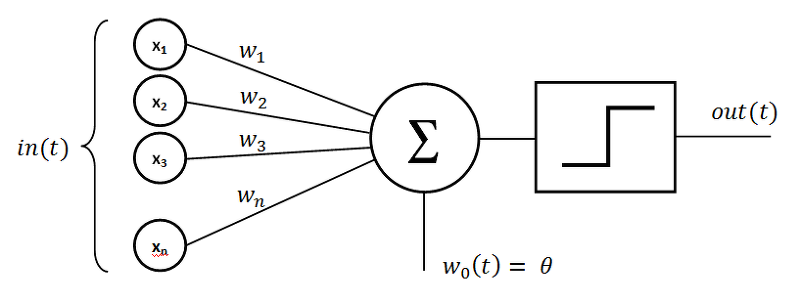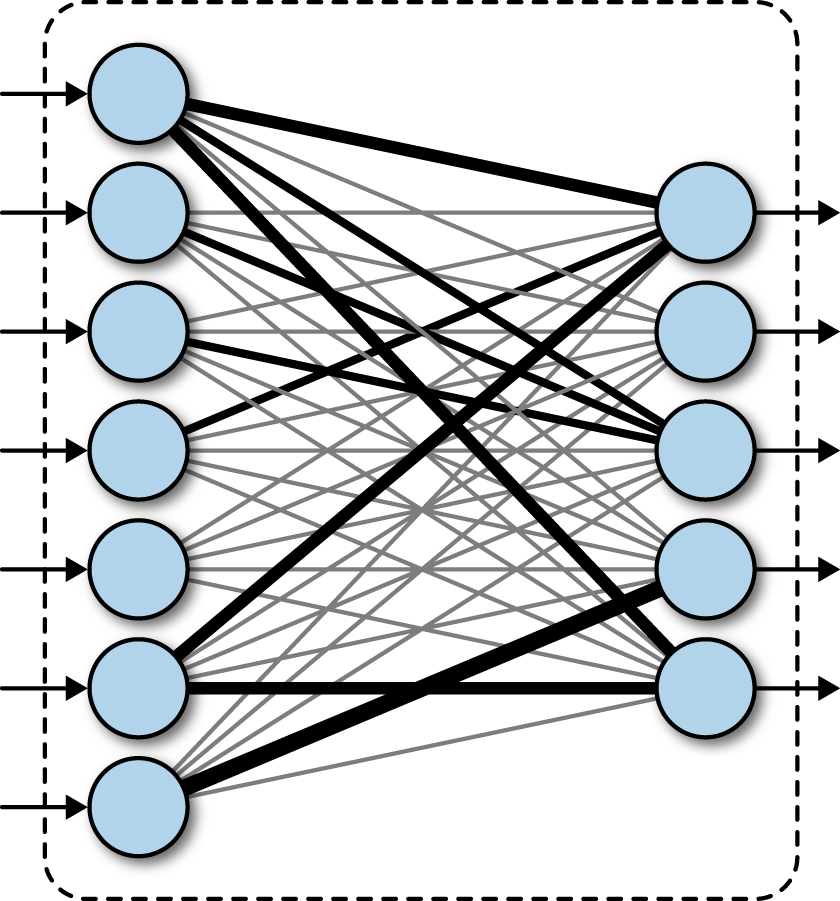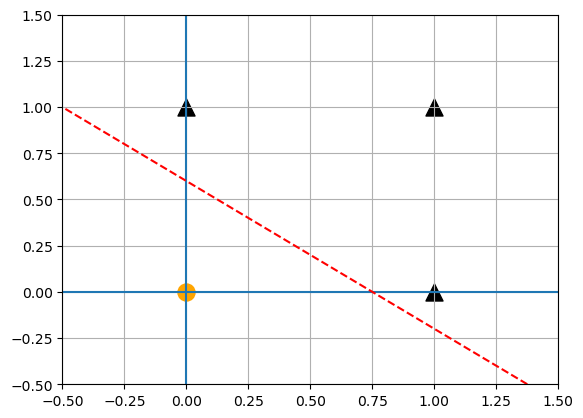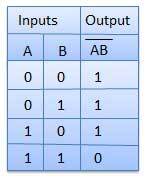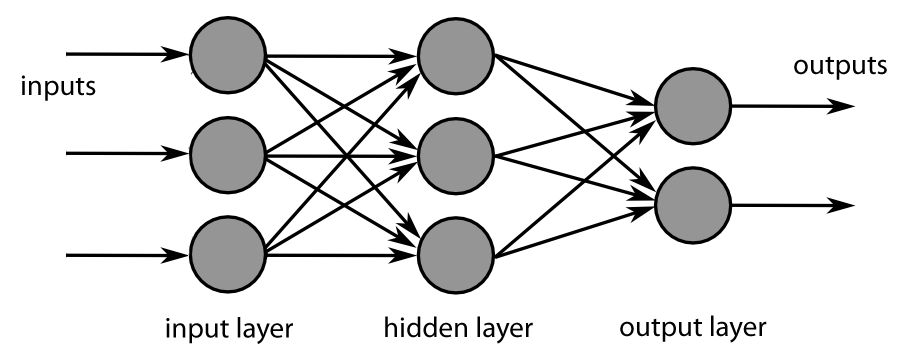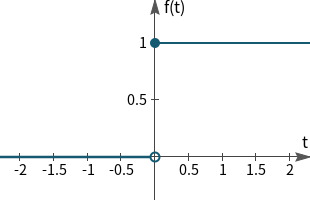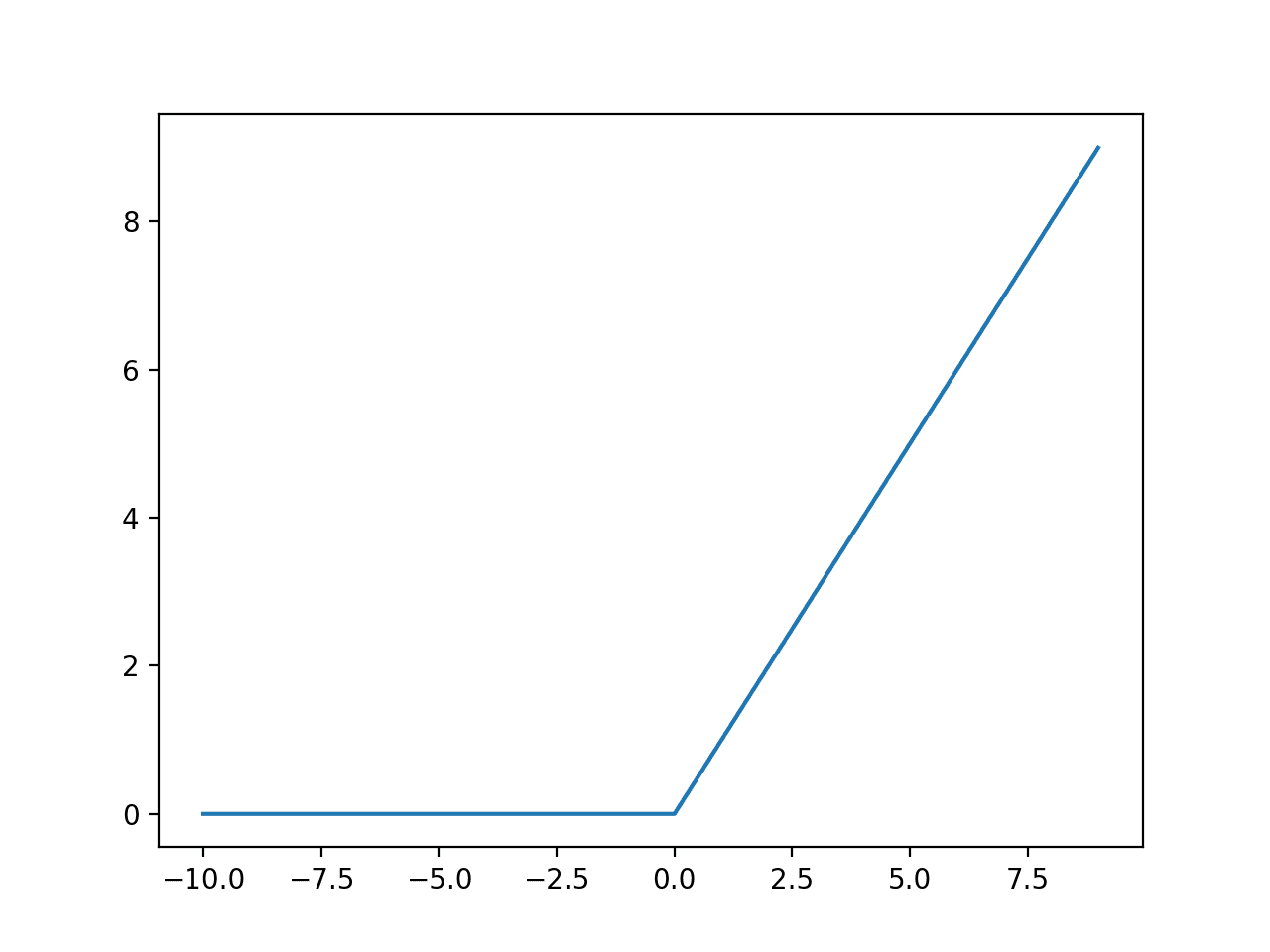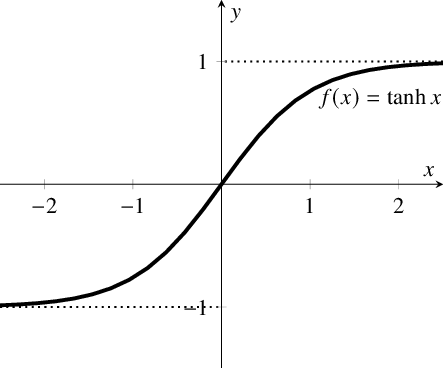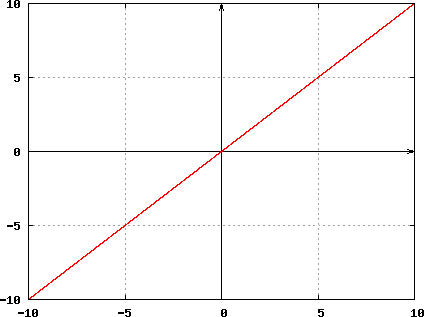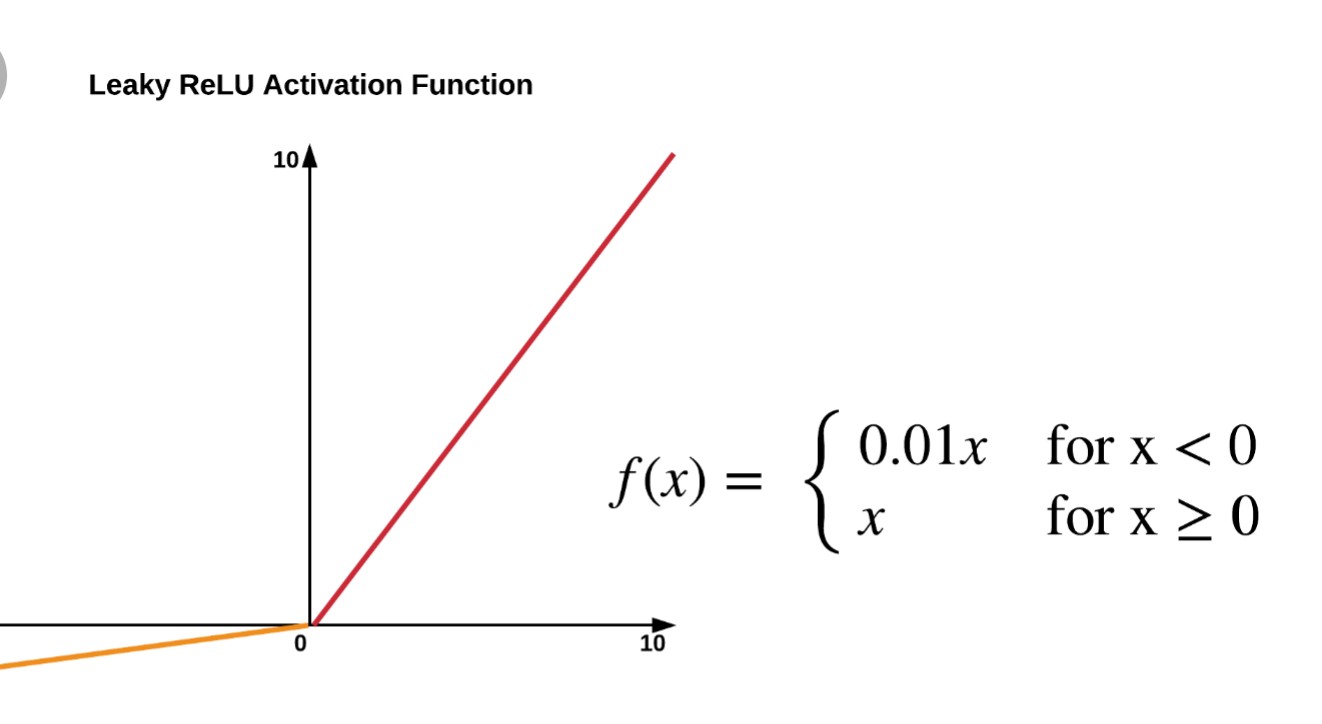● 합성곱 신경망(Convolutional Neural Networks, CNNs)
- 이미지 인식, 음성 인식 등에 자주 사용됨,
특히, 이미지 인식 분야에서 거의 모든 딥러닝 기술에 사용

- 완전 연결 계층과의 차이
- 완전 연결 계층(Fully-Connected Layer)은 이미지와 같은 데이터의 형상(3차원)을 무시함
- 모든 입력 데이터를 동긍하게 취급
즉, 데이터의 특징을 잃어버림 - 컨볼루션층(convolution layer)은 이미지 픽셀 사이의 관계를 고려
- 완전 연결 계층은 공간 정보를 손실하지만, 컨볼루션층은 공간 정보를 유지
- 이미지와 같은 2차원(흑백) 또는 3차원(컬러)의 형상을 유지
- 공간 정보를 유지하기 때문에 완전 연결 계층에 비해 적은 수의 파라미터를 요구
- 컨볼루션 신경망 구조 예시

1. 합성곱 연산
- 필터(filter) 연산
- 입력 데이터에 필터를 통한 어떠한 연산을 진행
- 필터에 대응하는 원소끼리 곱하고, 그 합을 구함
- 연산이 완료된 결과 데이터를 특징 맵(feature map)이라 부름
- 필터(filter)
- 커널(kernel)이라고도 칭함
- 흔히 사진 어플에서 사용하는 이미지 필터와 비슷한 개념
- 필터의 사이즈는 거의 항상 홀수
- 짝수면 패딩이 비대팅이 되어버림
- 왼쪽, 오른쪽을 다르게 주어야 함
- 중심 위치가 존재, 즉 구별된 하나의 필셀(중심 픽셀)이 존재
- 필터의 학습 파라미터 개수는 입력 데이터의 크기와 상관없이 일정,
따라서, 과적합 방지 가능
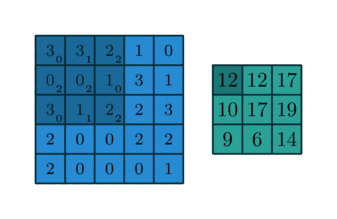
- 연산 시각화
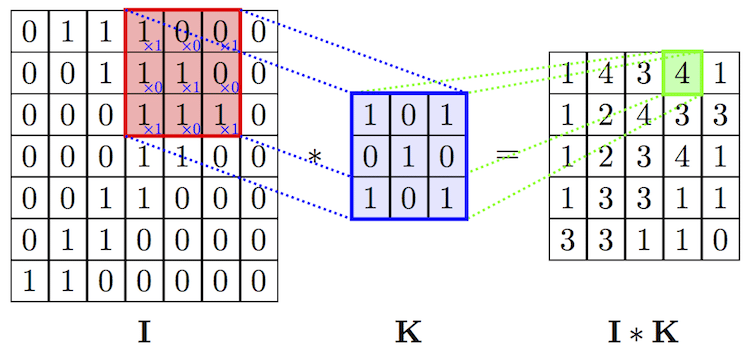
- 일반적으로 합성곱 연산을 한 후의 데이터 사이즈는
\( \qquad (n-f+1) \times (n-f+1) \)
\( n \): 입력 데이터의 크기
\( f \): 필터(커널)의 크기
- 예시
- 입력 데이터의 크기(\( n \))는 5, 필터의 크기(\( k \))는 3이므로, 출력 데이터의 크기는 \( (5-3+1)=3 \)
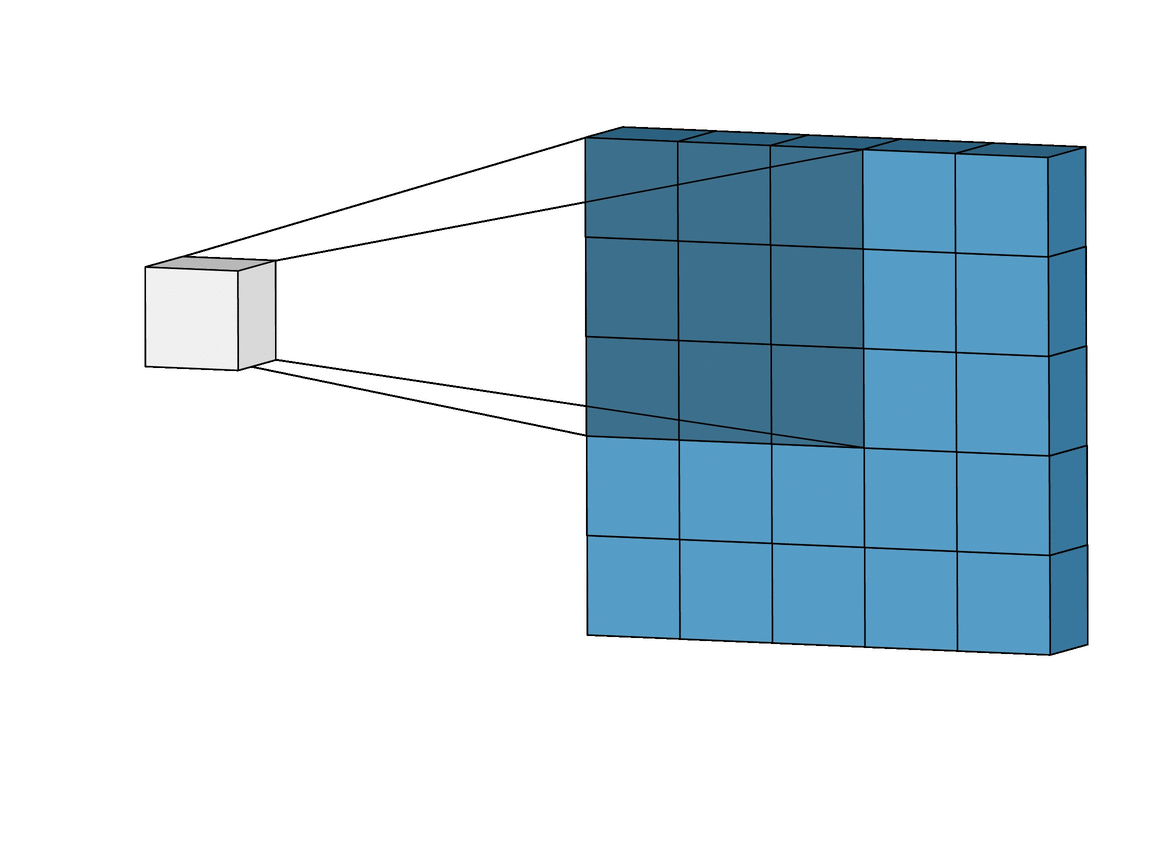
2. 패딩(padding)과 스트라이드(stride)
- 필터(커널) 사이즈와 함께 입력 이미지와 출력 이미지의 사이즈를 결정하기 위해 사용
- 사용자가 결정할 수 있음
- 패딩
- 입력 데이터의 주변을 특정 값으로 채우는 기법
- 주로 0으로 많이 채움

- 출력 데이터의 크기
\( \qquad (n+2p-f+1) \times (n+2p-f+1) \)
위 그림에서, 입력 데이터의 크기(\( n \))는 5, 필터의 크기(\( f \))는 4, 패딩값(\( p \))은 2이므로
출력 데이터의 크기는 \( (5+2 \times 2-4+1)=6 \)
- 'valid'와 'same'
- 'valid'
- 패딩을 주지 않음
- padding=0 (0으로 채워진 테두리가 아니라 패딩을 주지 않는다는 의미)
- 'same'
- 패딩을 주어 입력 이미지의 크기와 연산 후의 이미지 크기를 같게 함
- 만약, 필터(커널)의 크기가 \( k \)이면,
패딩의 크기는 \( p=\frac{k-1}{2} \)(단, stride=1)
- 스트라이드
- 필터를 적용하는 간격을 의미
- 아래는 그림의 간격 2

- 출력 데이터의 크기
$$ OH=\frac{H+2P-FH}{S}+1 $$
$$ OW=\frac{W+2P-FW}{S}+1 $$
- 입력 크기: \( (H, W) \)
- 필터 크기: \( (FH, FW) \)
- 출력 크기: \( (OH, OW) \)
- 패딩, 스트라이드: \( P, S \)
- (주의)
- 위 식의 값에서 \( \frac{H+2P-FH}{S} \)또는 \( \frac{W+2P-FW}{S} \)가 정수로 나누어 떨어지는 값이어야 함
- 만약, 정수로 나누어 떨어지지 않으면
패딩, 스트라이드 값을 조정하여 정수로 나누어 떨어지게 해야함
3. 풀링(Pooling)
- 필터(커널)의 사이즈 내에서 특정 값을 추출하는 과정
- 맥스 풀링(Max Pooling)
- 가장 많이 사용되는 방법
- 출력 데이터의 사이즈 계산은 컨볼루션 연산과 동일
$$ OH=\frac{H+2P-FH}{S}+1 $$
$$ OW=\frac{W+2P-FW}{S}+1 $$
- 일반적으로 stride=2, kernel_size=2를 통해 특징맵의 크기를 절반으로 줄이는 역할
- 모델이 물체의 주요한 특징을 학습할 수 있도록 해주며,
컨볼루션 신경망이 이동 불변성 특징을 가지게 해줌- 예를 들어, 아래의 그림에서 초록색 사각형 안에 있는 2와 8의 위치를 바꾼다해도 맥스 풀링 연산은 8을 추출
- 모델의 파라미더 개수를 줄여주고, 연산 속도를 빠르게 해줌
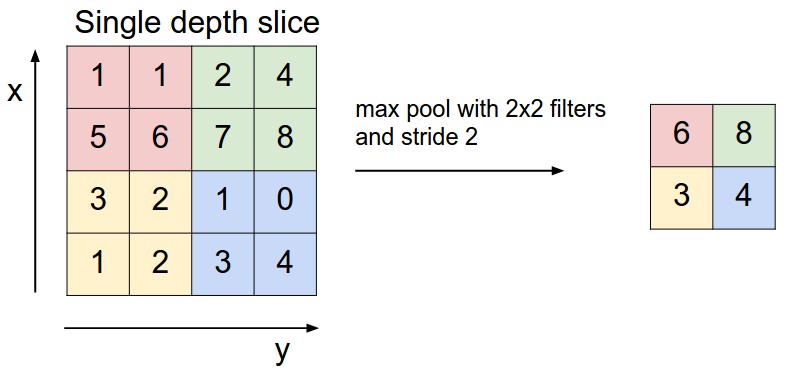
- 평균 풀링 (Avg Pooling)
- 필터 내에 있는 픽셀값의 평균을 구하는 과정
- 과거에 많이 사용, 요즘은 잘 사용되지 않음
- 맥스 풀링과 마찬가지로 stride=1, kernel_size=2를 통해 특징맵의 사이즈를 줄이는 역할

4. 합성곱 연산의 의미
- 2차원 이미지에 대한 필터 연산 예시
- 가장 자리 검출(Edge-Detection)
- 소벨 필터(Sobel Filter)
- Horizontal: 가로 방향의 미분을 구하는 필터 역할
- Vertical: 세로 방향의 미분을 구하는 필터 역할
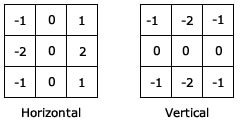
- module import
# %pip install opencv-python
import cv2
import numpy as np
import matplotlib.pyplot as plt
import urllib
import requests
from io import BytesIO- util functions
def url_to_image(url, gray = False):
resp = urllib.request.urlopen(url)
image = np.asarray(bytearray(resp.read()), dtype = 'uint8')
if gray == True:
image = cv2.imdecode(image, cv2.IMREAD_GRAYSCALE)
else:
image = cv2.imdecode(image, cv2.IMREAD_COLOR)
image = cv2.cvtColor(image, cv2.COLOR_BGR2RGB)
return image
def filtered_image(image, filter, output_size):
filtered_img = np.zeros((output_size, output_size))
filter_size = filter.shape[0]
for i in range(output_size):
for j in range(output_size):
# 이미지의 각 픽셀 (i, j)를 돌면서 합성곱 연산을 진행 후, 마지막에 합성곱 연산으로 filtering된 이미지 return
multiply_values = image[i:(i+filter_size), j:(j+filter_size)] * filter
sum_value = np.sum(multiply_values)
if (sum_value > 255):
sum_value = 255
filtered_img[i, j] = sum_value
return filtered_img- 이미지 확인(예시이므로 정사각형 사이즈로 진행)
# 이미지 처리계의 hello world같은 이미지
img_url = "https://upload.wikimedia.org/wikipedia/ko/thumb/2/24/Lenna.png/440px-Lenna.png"
image = url_to_image(img_url, gray = True)
print("image.shape:", image.shape)
plt.imshow(image, cmap = "gray")
plt.show()image.shape: (440, 440)
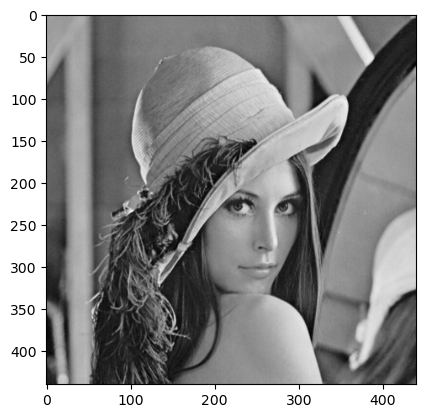
- 필터 연산 적용
vertical_filter = np.array([[1., 2., 1.],
[0., 0., 0.,],
[-1., -2., -1.]])
horizontal_filter = np.array([[1., 0., -1.],
[2., 0., -2.],
[1., 0., -1.]])
output_size = int((image.shape[0] - 3) / 1 + 1)
print("output_size:", output_size)
vertical_filtered = filtered_image(image, vertical_filter, output_size)
horizontal_filtered = filtered_image(image, horizontal_filter, output_size)
plt.figure(figsize = (10, 10))
plt.subplot(1, 2, 1)
plt.title("Vertical")
plt.imshow(vertical_filtered, cmap = 'gray')
plt.subplot(1, 2, 2)
plt.title("Horizontal")
plt.imshow(horizontal_filtered, cmap = 'gray')
plt.show()output_size: 438

- 이미지 필터를 적용한 최종 결과
# vertical, horizontal 두 개의 필터 연산 결과를 제곱하여 더한 뒤 루트로 제곱근을 구한 연산 시행
sobel_img = np.sqrt(np.square(horizontal_filtered) + np.square(vertical_filtered))
plt.imshow(sobel_img, cmap = 'gray')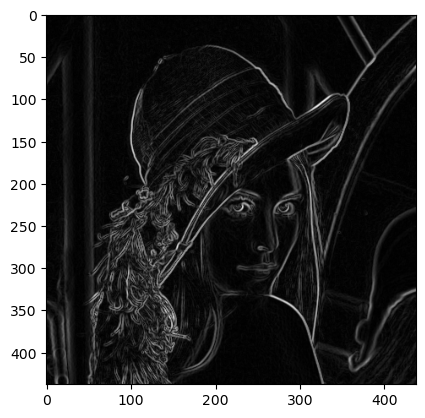
- 3차원 데이터의 합성곱 연산
- 이미지는 3차원으로 구성
- (가로, 세로, 채널수)
- 채널: RGB
- 색상값의 정도에 따라 color 결정

- 이미지 확인
img_url = "https://upload.wikimedia.org/wikipedia/ko/thumb/2/24/Lenna.png/440px-Lenna.png"
# 위에서 흑백으로 출력했을 때와 다르게 'gray = True' 옵션을 제외
image = url_to_image(img_url)
print("image.shape:", image.shape)
# 출력 시에서 "cmap = 'gray'" 옵션을 제외
plt.imshow(image)
plt.show()image.shape: (440, 440, 3)

# Red Image
image_copy = image.copy()
# 이미지의 shape의 세번째 인덱스는 R, G, B로 된 값이고 현재 3으로 세가지 값 모두 존재
# 아래에서 1, 2를 0으로 만들어 G, B 값을 빼주면 R만 남은 이미지를 만들 수 있음
image_copy[:, :, 1] = 0
image_copy[:, :, 2] = 0
image_red = image_copy
plt.imshow(image_red)
plt.show()
image_copy = image.copy()
# 아래에서 0, 2를 0으로 만들어 R, B 값을 빼주면 G만 남은 이미지를 만들 수 있음
image_copy[:, :, 0] = 0
image_copy[:, :, 2] = 0
image_green = image_copy
plt.imshow(image_green)
plt.show()
image_copy = image.copy()
# 아래에서 0, 1을 0으로 만들어 R, G 값을 빼주면 B만 남은 이미지를 만들 수 있음
image_copy[:, :, 0] = 0
image_copy[:, :, 1] = 0
image_blue = image_copy
plt.imshow(image_blue)
plt.show()
# 한번에 띄우고 흑백 이미지와 비교
fig = plt.figure(figsize = (12, 8))
title_list = ['R', 'G', 'B',
'R - grayscale', 'G - grayscale', 'B - grayscale']
image_list = [image_red, image_green, image_blue,
image_red[:, :, 0], image_green[:, :, 1], image_blue[:, :, 2]]
for i, image in enumerate(image_list):
ax = fig.add_subplot(2, 3, i+1)
ax.title.set_text("{}".format(title_list[i]))
if i >= 3:
plt.imshow(image, cmap = 'gray')
else:
plt.imshow(image)
plt.show()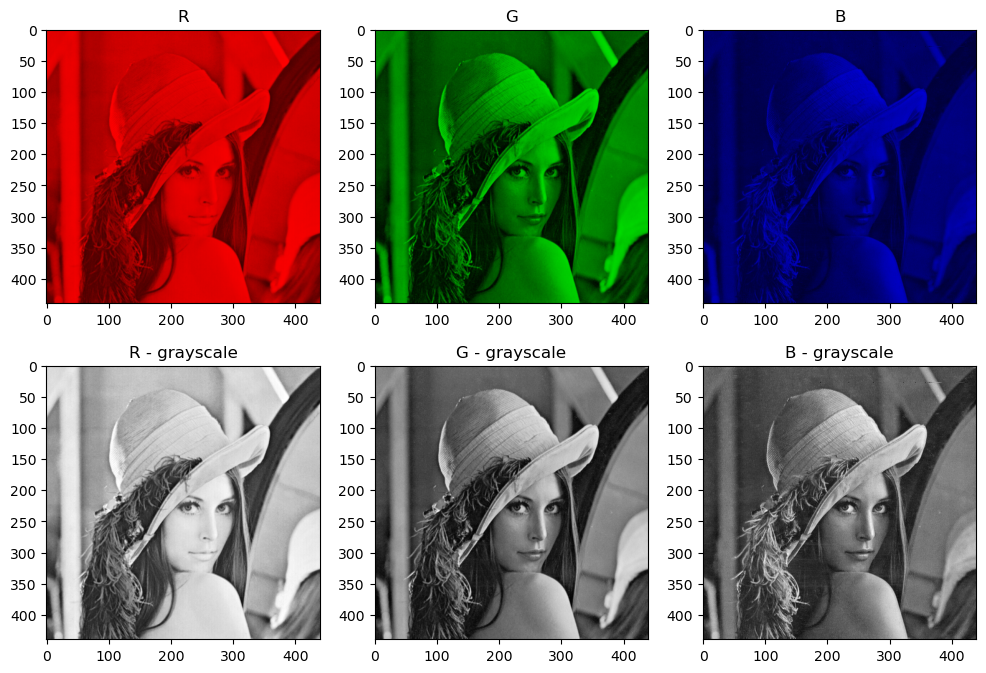
- 연산 과정
- 각 채널마다 컨볼루션 연산을 적용
- 3채널을 모두 합쳐서 '하나의 필터'라고 칭함
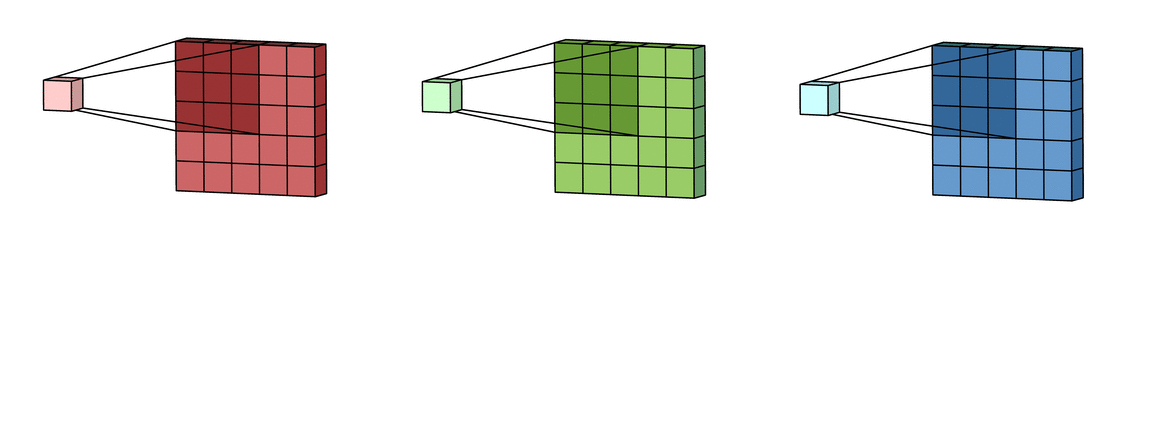
- 각각의 결과를 더함
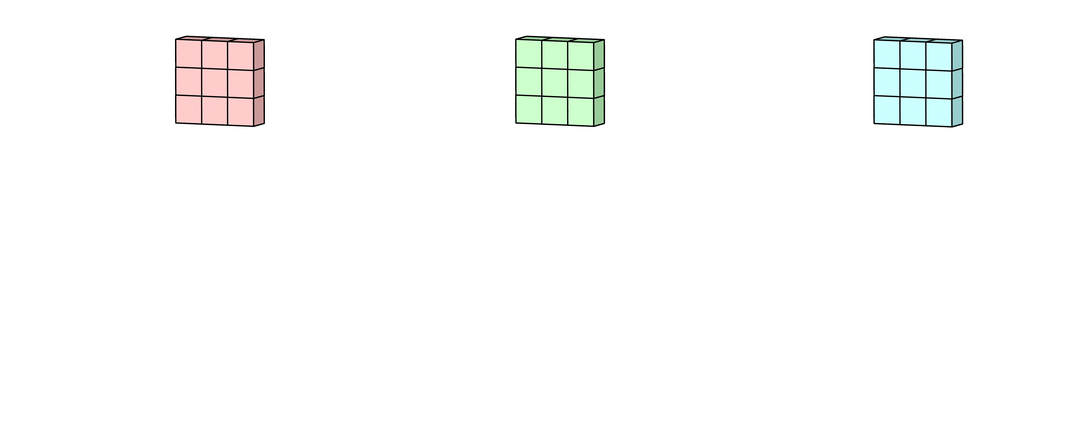
- 더한 결과에 편향을 더함
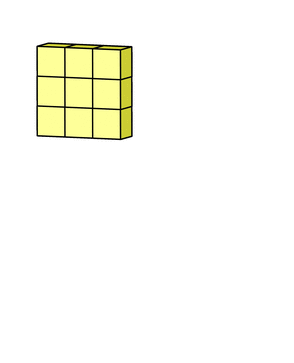
- modules import
# %pip install opencv-python
import cv2
import numpy as np
import matplotlib.pyplot as plt
import urllib
import requests
from io import BytesIO- util functions
def url_to_image(url, gray = False):
resp = urllib.request.urlopen(url)
image = np.asarray(bytearray(resp.read()), dtype = 'uint8')
if gray == True:
image = cv2.imdecode(image, cv2.IMREAD_GRAYSCALE)
else:
image = cv2.imdecode(image, cv2.IMREAD_COLOR)
image = cv2.cvtColor(image, cv2.COLOR_BGR2RGB)
return image
def conv_op(image, kernel, pad = 0, stride = 1):
H, W, C = image.shape
kernel_size = kernel.shape[0]
out_h = (H + 2*pad - kernel_size) // stride + 1
out_w = (W + 2*pad - kernel_size) // stride + 1
filtered_img = np.zeros((out_h, out_w))
img = np.pad(image, [(pad, pad), (pad, pad), (0, 0)], 'constant')
for i in range(out_h):
for j in range(out_w):
for c in range(C):
multiply_values = image[i:(i + kernel_size), j:(j + kernel_size), c] * kernel
sum_value = np.sum(multiply_values)
filtered_img[i, j] += sum_value
filtered_img = filtered_img.reshape(1, out_h, out_w, -1).transpose(0, 3, 1, 2)
return filtered_img.astype(np.uint8)- 이미지 확인
img_url = "https://upload.wikimedia.org/wikipedia/ko/thumb/2/24/Lenna.png/440px-Lenna.png"
image = url_to_image(img_url)
print("image.shape:", image.shape)
plt.imshow(image)
plt.show()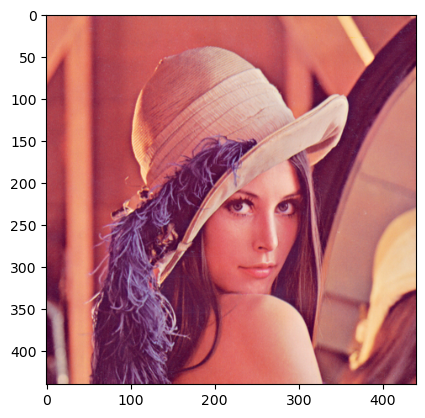
- 필터연산 적용
- 3×3 크기의 3채널 필터 5개
- (5, 3, 3, 3) → (5개, 3채널, 세로, 가로)
# 예시 1
filter1 = np.random.randn(3, 3, 3)
print(filter1.shape)
print(filter1)
# 출력 결과
(3, 3, 3)
[[[ 1.03527724 -0.91961541 1.12674622]
[ 0.90570621 2.43452234 -0.58178937]
[-0.20276794 -0.69609947 -0.22246946]]
[[-0.19455091 0.96691228 1.18181353]
[-0.75600052 -2.92070965 0.42929136]
[-0.43024675 0.61458207 -0.52046698]]
[[ 0.82826973 0.55922214 0.27557231]
[-0.47029333 -0.53727015 1.44036126]
[-0.74869707 1.89852507 1.45523256]]](1, 1, 438, 438)
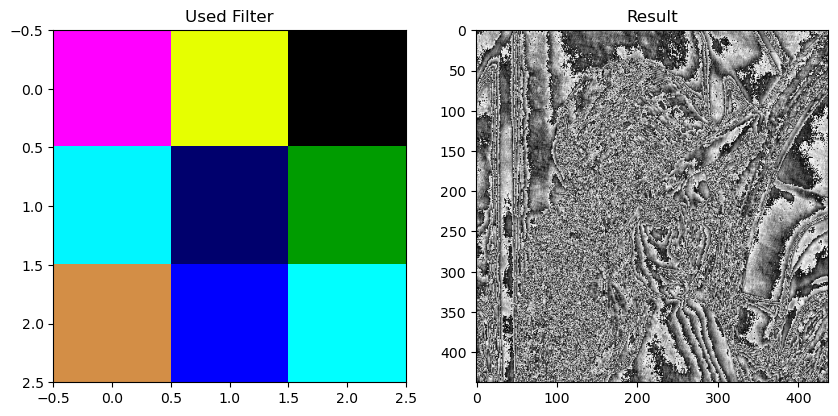
# 예시 2
filter2 = np.random.randn(3, 3, 3)
print(filter2.shape)
print(filter2)
# 출력 결과
(3, 3, 3)
[[[ 1.03641458 1.4153158 -0.56486124]
[-0.1553772 -1.86455138 -0.00522765]
[ 0.1220599 0.43514984 0.32804735]]
[[ 0.81778856 1.64887384 -1.29579815]
[-0.45742362 -0.23823593 1.17207619]
[ 0.29878226 0.02336725 -0.95649443]]
[[-0.97517188 0.91275201 -1.00159311]
[-1.80679889 -0.40762195 -2.10950021]
[ 1.94690784 -0.80022143 -0.04150088]]]filtered_img2 = conv_op(image, filter2)
print(filtered_img1.shape)
plt.figure(figsize = (10, 10))
plt.subplot(1, 2, 1)
plt.title("Used Filter")
plt.imshow(filter2, cmap = 'gray')
plt.subplot(1, 2, 2)
plt.title("Result")
plt.imshow(filtered_img2[0, 0, :, :], cmap = 'gray')
plt.show()(1, 1, 438, 438)

- 필터연산을 적용한 최종 결과
# 위의 예시 전부 sum
filtered_img = np.stack([filtered_img1, filtered_img2]).sum(axis = 0)
print(filtered_img.shape)
plt.imshow(filtered_img[0, 0, :, :], cmap = 'gray')
plt.show()(1, 1, 438, 438)

- 전체 과정 한번에 보기
# 5개의 랜덤 필터를 만들고
np.random.seed(222)
fig = plt.figure(figsize = (8, 20))
filter_num = 5
filtered_img = []
for i in range(filter_num):
ax = fig.add_subplot(5, 2, 2*i+1)
ax.title.set_text("Filter {}".format(i + 1))
filter = np.random.randn(3, 3, 3)
plt.imshow(filter)
ax = fig.add_subplot(5, 2, 2*i+2)
ax.title.set_text("Result")
filtered = conv_op(image, filter)
filtered_img.append(filtered)
plt.imshow(filtered[0, 0, :, :], cmap = 'gray')
plt.show()
# 만들어진 필터를 sum하여 컨볼루션 연산 하는 과정을 한번에 작성
filtered_img = np.stack(filtered_img).sum(axis = 0)
print(filtered_img.shape)
plt.imshow(filtered_img[0, 0, :, :], cmap = 'gray')
plt.show()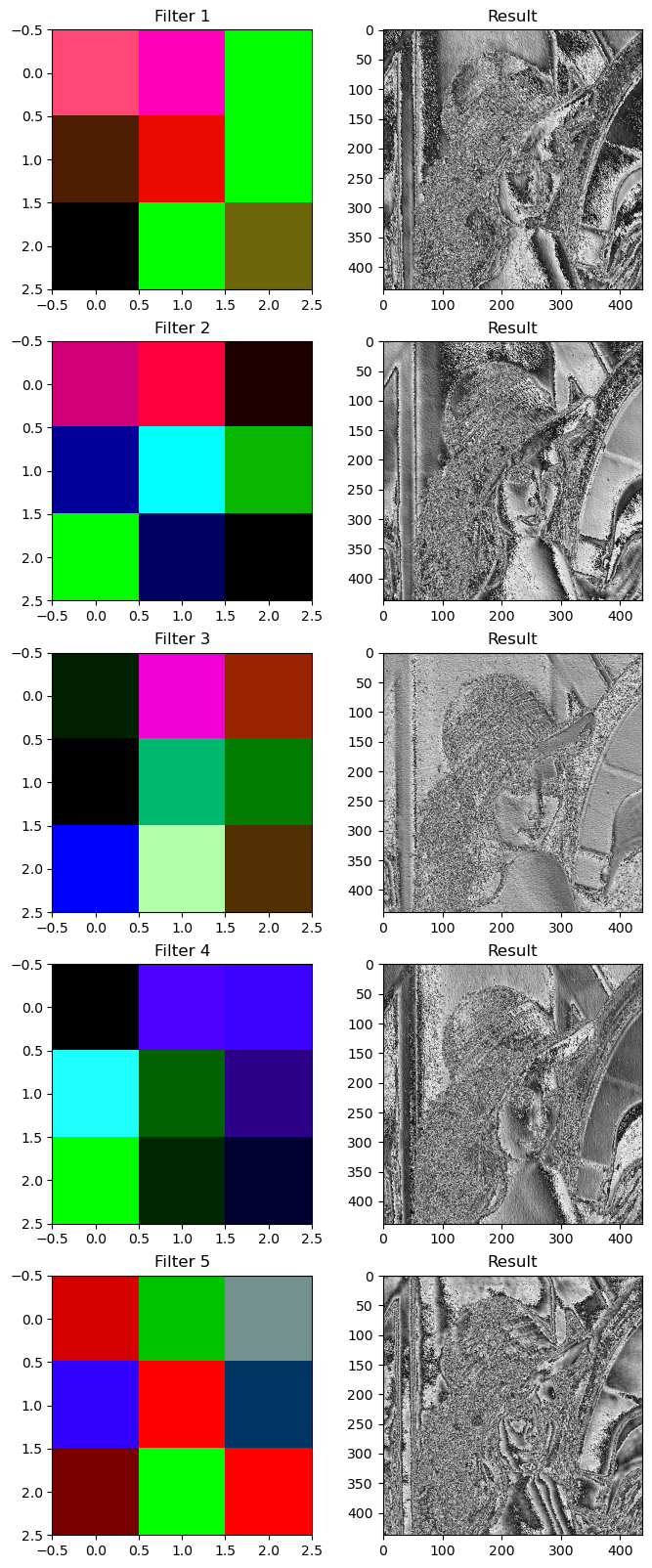
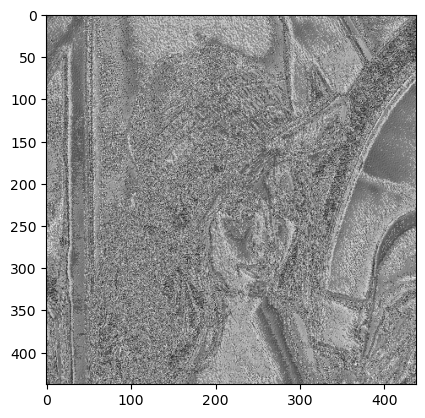
'Python > Deep Learning' 카테고리의 다른 글
| [딥러닝 기초] 자연어 처리 (0) | 2023.03.27 |
|---|---|
| [딥러닝 기초] CNN(합성곱 신경망)(2) (0) | 2023.03.23 |
| [딥러닝 기초] 딥러닝 학습 기술 (2) (0) | 2023.03.22 |
| [딥러닝 기초] 딥러닝 학습 기술 (1) (0) | 2023.03.21 |
| [딥러닝 기초] 오차역전파(Backpropagation) (0) | 2023.03.15 |

